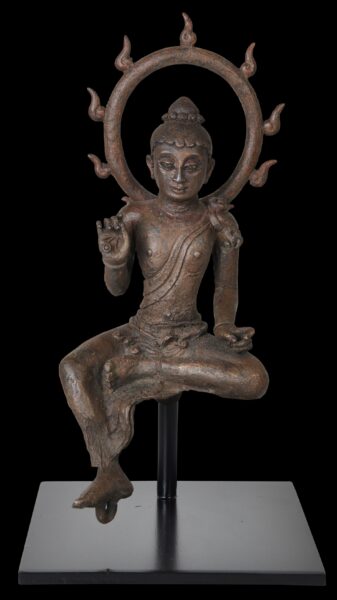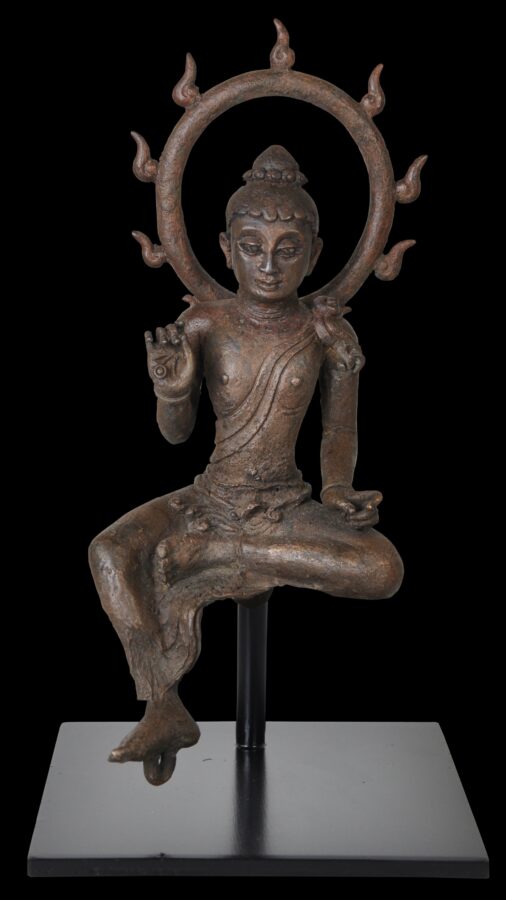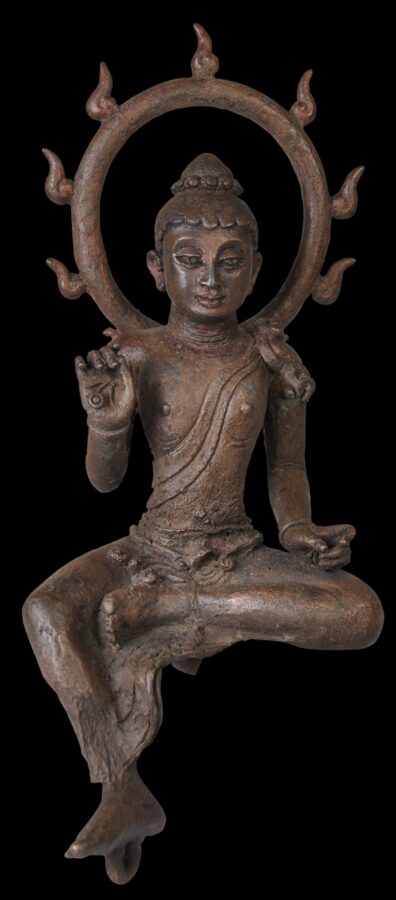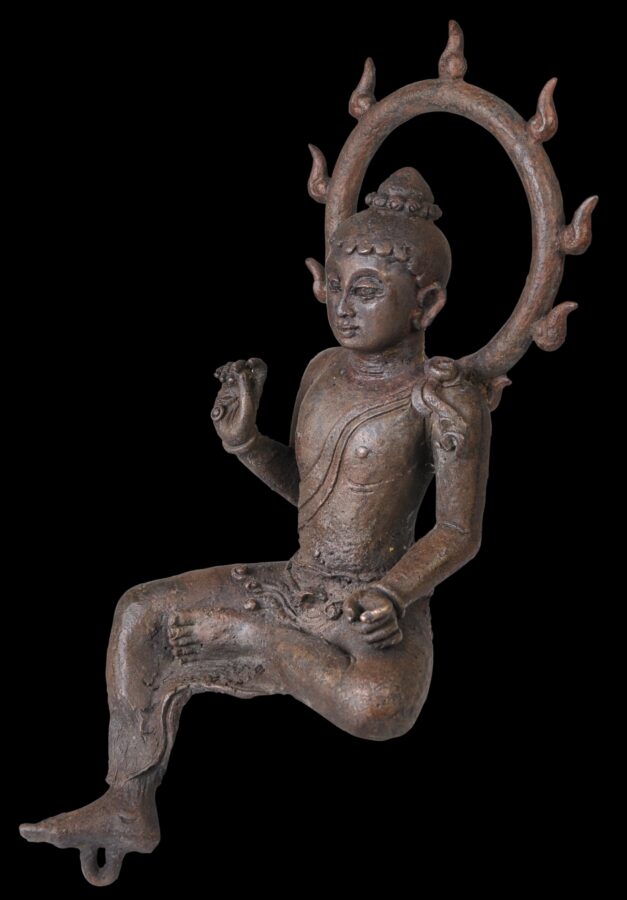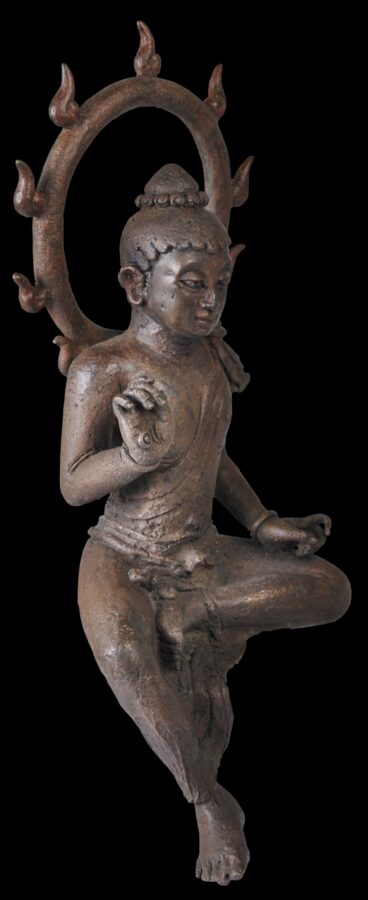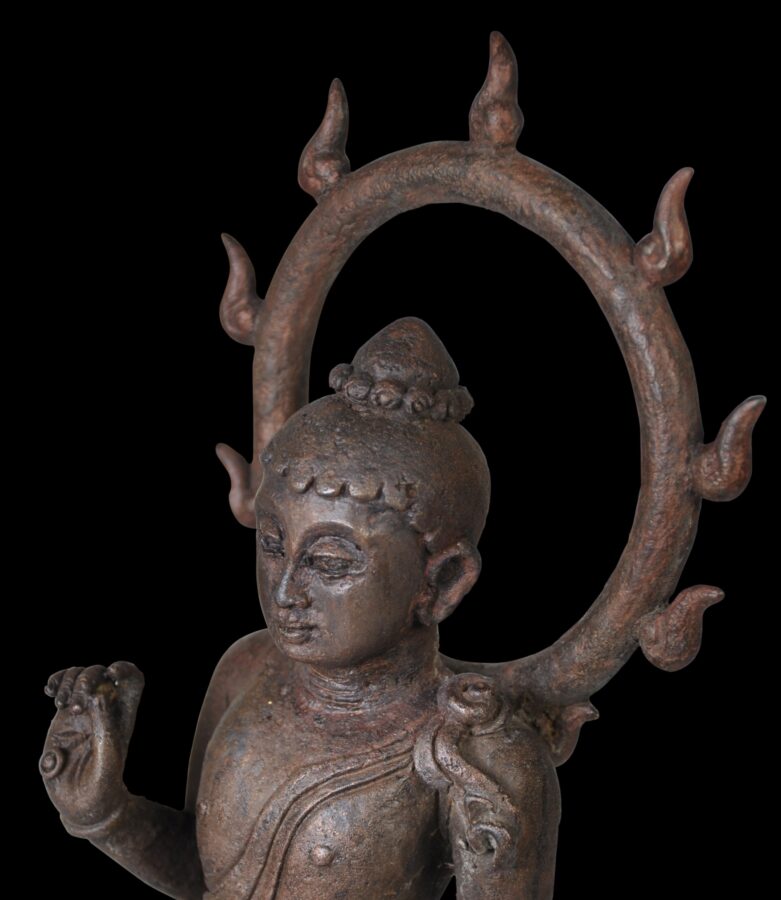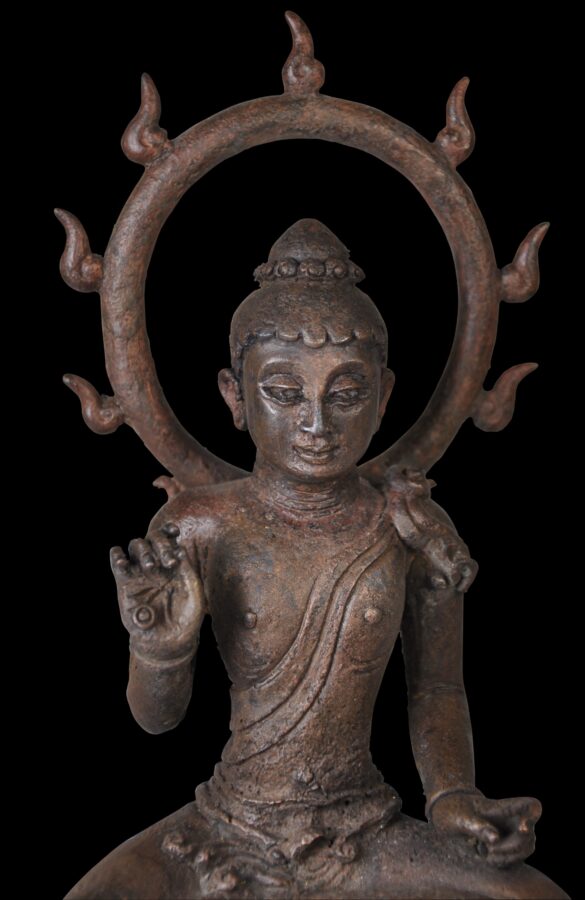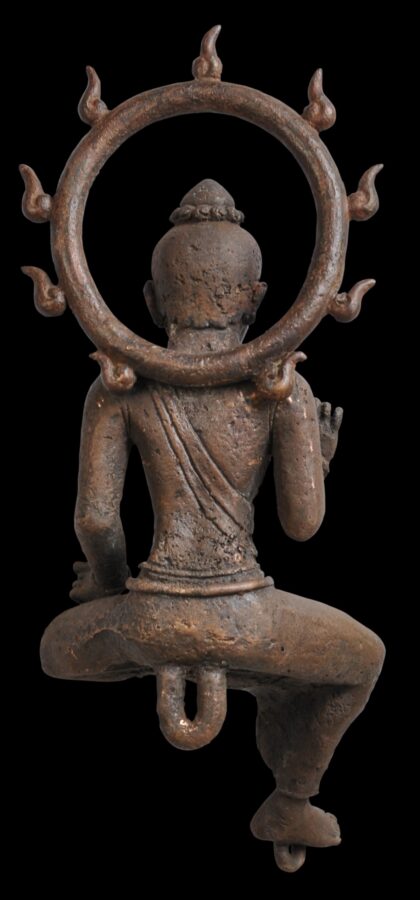This unusual Srivijaya cast bronze Buddha is seated in royal ease – the left leg is raised and the right leg dangles down over what would have been a plinth to which the image was secured. A flaming round aureole is attached to the back.
The image is slender, which is typical of Srivijaya renderings.
The image belongs to a Buddhist ascetic tradition with minimal clothing and decoration. The conventional depiction of the Buddha’s earlobes as elongated to demonstrate his princely origins (the lobes would have held heavy gold earrings during his younger years as a prince, hence the elongation) is avoided here. There are however plain bracelets and a wasitband which has a leafy or foliate closure around the front. This foliate element is very much a Southeast Asian addition to the broader aesthetic introduced from India.
The robes are tied in a knot on the left shoulder leaving the right shoulder bare, and extend to the ankles.
The fingers are carefully delineated as are the fingernails. The fingers themselves even have tiny skin creases.
There is a large cranial protuberance surrounded by a row of peppercorn curls or knots.
The palm of the raised right hand has a curious raised, round mark – almost akin to a tiny seal mark. These often appear on Srivijaya bronzes.
The Srivijaya kingdom was centred on south Sumatra and included parts of the Malay Peninsula and what is now southern Thailand. It was an early Malay, pre-Islamic, Buddhist kingdom with strong trade links to the region. It was also a centre for missionary activity by monks and scholars from India who spread Buddhism and then Hinduism to the region.
The image has a brown patina consistent with having come from water-logged soil. This can be expected – Srivijaya culture, like the Malay culture that emerged from it – was riverine based, with towns being built next to and sometimes over rivers and estuaries.
The image is accompanied by an attractive, custom-made black metal stand.
References
Guy, J., Lost Kingdoms: Hindu Buddhist Sculpture of Early Southeast Asia, Metropolitan Museum of Art, 2014.
Kempers, A.J.B., Ancient Indonesian Art, CPJ ven der Peet (Amsterdam), 1959.


